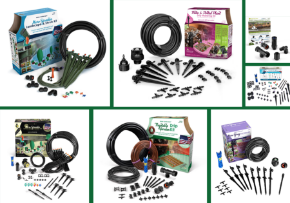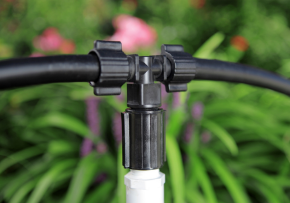Watering roses is more than just turning on the hose and giving them a good dousing for a few minutes. Frequent watering in such a manner can cause black spots and mildew to form on those beautiful petals. Watering frequently on the petals can spread disease, too.
When it comes to roses, the key to good watering is to water deep and infrequently.
With the use of Mister Landscaper's 3 in One Down Spray Mister MLM-236 or Down Spray Mister MLM-06, you can set up these down spray mister sprayers to water the base of your rose bushes, making sure the soil and roots are adequately hydrated.
These two microsprays can be installed to water and give off a spray radius between 4 to 5 feet, ensuring a good root coverage area and making sure you’re not wasting water.
How often you decide to hydrate your roses depends on your climate and region. One simple way of knowing whether or not your roses need hydration is by frequently checking the soil moisture level. This can easily be done by sticking your finger at least an inch or so into the soil to test for moisture. Also, add mulch to your beds to maintain moisture around your bushes.
Certainly a yard full of vibrant beautiful aroma-filled roses is worth all the dirt and sweat we put into them. Caring for them can be difficult. But with use of such simple-to-use products here at
Mister Landscaper, your rose garden will flourish for years to come.
Happy Gardening!
Join the discussion... How are your roses doing? How have you been watering them?












